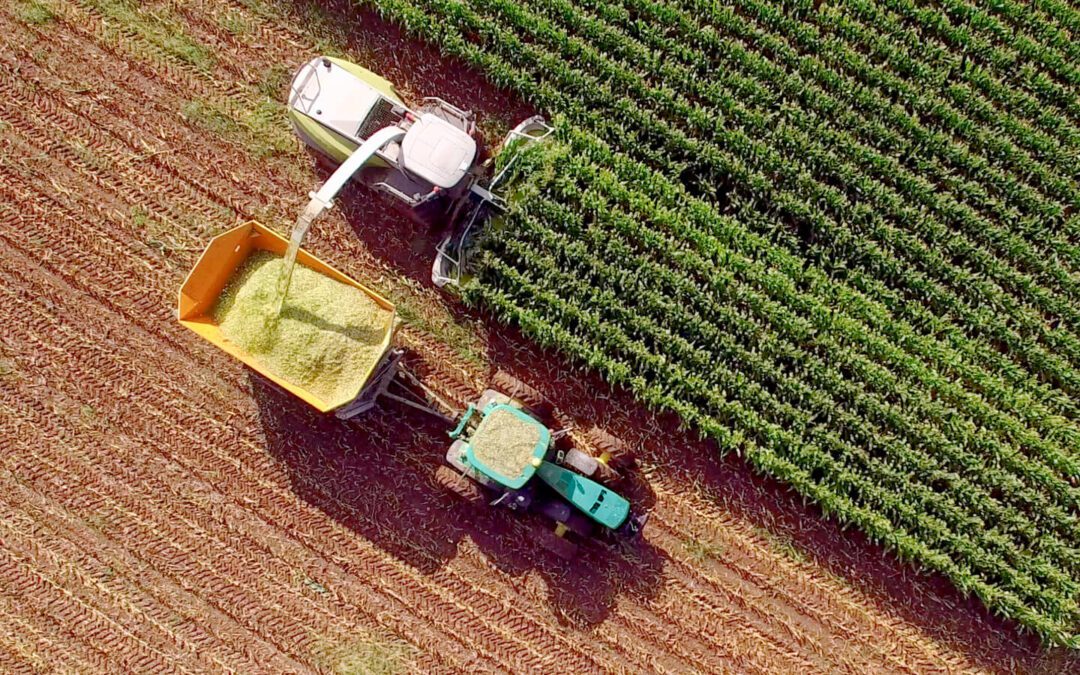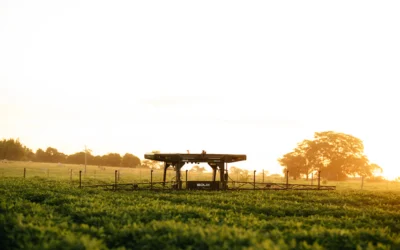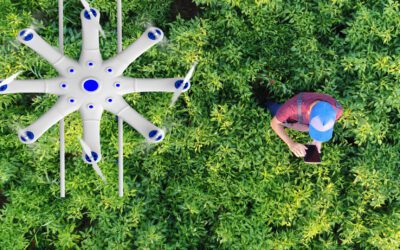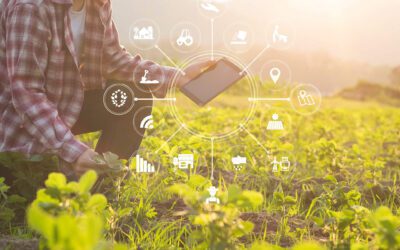Agribusiness in Brazil is booming. Part of this is due to the increase in soybean production, which should surpass the US in 2020, and thus reach the position of the largest producer in the world, in addition to being responsible for the biggest beef export.
Despite all the current difficulties due to the crisis caused by the Coronavirus pandemic, Brazilian agribusiness has been breaking records in production and exports. According to the president of the Parliamentary Front for Agriculture (FPA), Alceu Moreira, agribusiness will be the sector that will emerge with more opportunities from this crisis.
To find out what the prospects are for agribusiness in Brazil in the coming years, read this article and learn about the trends for the future and, of course, understand how technology will affect this market!
The importance of agribusiness for the Brazilian economy
Agribusiness is one of the main sectors of the economy. Currently, it represents 21% of the Brazilian GDP, but this number is expected to grow in future years. In addition to production for domestic consumption, Brazil is one of the largest exporters of a wide variety of foods—ranging from coffee to sugar—and is also one of the leaders in beef and chicken production.
Brazilian agribusiness figures
More than the ideal conditions for agriculture, livestock, and other related activities, Brazil is one of the centers of scientific knowledge in the sector. In the last 30 years, the country grew 334% in grain production, while, in the same period, the planted area increased only 71%. In other words, Brazil has learned to do more with less, which has turned it into a global reference.
In addition to its substantial contribution to Brazilian GDP, agribusiness is responsible for 20% of the jobs created in the country. It can even be said that agribusiness is the business that supports the Brazilian economy, especially in recent years, in a recession—followed by a slow recovery and interrupted by the Coronavirus pandemic—since other sectors have presented deficient results.
In 2019, there were US$ 96.8 billion in foreign agribusiness sales, which represented 43.2% of total Brazilian exports during that time. This figure indicates an increase in the sector's participation in foreign trade in relation to 2018, which had a result of 42.3%.
Important partners
China is one of Brazil's main partners in agribusiness. The Asian country purchased 26.8% of the beef produced in the country in 2019, consolidating itself as the main importer of national cattle.
In addition to that, China is the largest buyer of soybeans in the world. In the coming years, the country will be the destination of 85% of Brazilian exports. According to Aprosoja Brasil's Crop Estimate, out of the 120 million tons of soybeans that Brazil is expected to produce in 2020, 66 million tons will be for the Chinese.
These figures reinforce the importance of the commercial partnership between the two countries, in addition to showing a positive scenario for the grain market, even in the midst of the pandemic. In addition to China, territories such as Hong Kong, Macau, the US, the Netherlands, Argentina, and Japan are other essential trade partners for agribusiness and for Brazil's economy as a whole.
Production maintenance in times of crisis
From time to time, local crises or even global issues, such as the Coronavirus threat, can affect the economy in countries that traditionally import Brazilian products. However, agribusiness is such a strong sector in Brazil that it can stand out even when the scenario is not the most favorable.
As an example, in the first quarter of 2020, the sector grew 0.6% in the country, compared to the last three months of 2019. In fact, it was the only economic sector that had any kind of success in the period. When compared with the same time interval as the previous year, the growth was even greater, at 1.9%.
Although the pandemic had not yet significantly affected the economy in the first quarter of the year—considering that the World Health Organization (WHO) only declared the global scale of the epidemic on March 11, 2020—the figures are representative. Just look at the performance of the other sectors.
It is clear that several factors influence agribusiness numbers. The climate needs to be favorable in each region, according to the needs of the crop. Logistics must be adequate for food to reach its buyers, regardless of where they are on the planet. And, finally, the exchange rate must be favorable for the economic results to be adequate.
The challenges for agricultural production in Brazil
Despite the positive results, agricultural production in Brazil is a constant challenge for those who work in the sector. There are uncontrollable variables, such as the weather, the exchange rate and even possible sanctions that can be applied for health reasons, for which it is not always possible to be 100% prepared.
Below, we present the main challenges for the sector in the coming years.
High-risk market
Agribusiness is composed of a series of risks. Among the biggest ones, the following can be highlighted:
- operational risks - failures in processes, whether in planting, harvesting, or in animal care;
- agronomic risks - climatic events, infestations, pests, and other agents that can harm results;
- market risks - price fluctuations (which may occur based on international supply and demand), exchange rates (high and low in the dollar), and interest on production financing are some market examples;
- financial risks - inability to pay debts, with consequent impacts on agricultural production and operation;
- institutional risks - here, issues related to policies implemented by governments are included, which may be of an economic, sanitary, fiscal, or environmental nature.
Considering these five types of risk, we can say that Brazil may have problems related to at least four of them in the short term: agronomic, market, financial, and institutional risks are constant challenges for producers in the country. Operational risks can also occur, but on a smaller scale and, usually, as a result of climatic difficulties.
High cost vs. productivity
The rise in costs in many crops is explained by the exchange rate variation—,which is influenced by multiple factors, such as market, political, or health. This has an impact on the sector's productivity. In 2020 alone, agribusiness production costs increased by 1.83% due to fluctuations in the exchange rate.
Likewise, climatic variations influence how much can be produced and even the food quality. In periods of prolonged drought, it is natural for productivity to drop and prices to rise—since production costs also rise, with a greater effort spent by farmers to save the crop.
In the southern region of Brazil, the drought affected several agribusiness sectors in 2020, such as rice, corn, soybeans, and milk production, among others. Losses are estimated to reach R$ 3 billion. In April, the Ministry of Agriculture announced relief measures to the state, with the aim of minimizing losses.
Export
Despite climatic difficulties in some regions, high costs due to the exchange rate, and the Coronavirus pandemic, exports remain strong in Brazilian agribusiness. In May 2020, the trade balance was 32% above the same period in 2019. Between January and April 2020, US$ 31.4 billion were exported in food, a record for the first four months of the year.
According to the May 2020 DEAGRO Newsletter, released by FIESP, the previous export record for April happened in 2013. At the time, exports were of US$ 9.65 billion, reaching US$ 10.22 billion in 2020.
With the pandemic, the demand for Brazilian soy increased in the international market, promoting an anticipation of the product's exports. This explains, in part, the increase in agribusiness foreign sales in the period. The other products in the trade balance dropped by 27.1%, with a negative highlight for corn (-96.2%), leather (-42.4%) and cellulose (-29.8%).
Family agriculture
One of the characteristics of Brazilian agribusiness is that family farming makes up almost 85% of the sector. However, these small producers have only 25% of the area available for this activity.
Large industries, with more technical capacity to produce food in larger quantities, occupy the remaining 75% of the area and take the largest share of Plano Safra—a credit offered by the Federal Government for national agricultural production.
Despite this, the numbers demonstrate how important family farming is to national agribusiness. With all the difficulties, some of the most representative results come from the smallholdings. See the production percentage produced by family farming of some of the most consumed foods in Brazil and in the world:
- 87% of cassava manioc;
- 70% of beans;
- 60% of milk;
- 59% of pork;
- 50% of chicken meat.
Main products of Brazilian agribusiness
Brazil is one of the export leaders in several crops. Below, we highlight the country's main products of agriculture and livestock.
Soy
Brazil is the second largest producer—and the largest exporter—of soybeans in the world, second only to the US in the amount of grains harvested each year. Especially in 2020, soybeans leveraged the results of Brazilian agribusiness.
Beef
Brazil exports beef to more than 150 countries, being one of the major players in the world market. The advanced technology in breeding has led the country to reach a level of global prominence, not only for the quantity, but also for the quality of the product.
Corn
Corn production is constant in Brazil, but the results vary. In 2019, the country experienced booming growth and was the largest grain producer in the world, with almost 45 million tons—surpassing its most traditional competitor, the US. However, in 2020 the decline was sharp, due to the drought and the planted area's reduction.
Milk
Family farming plays a key role in the Brazilian milk production chain. Although production has increased more than four times in the past 45 years, productivity is still a challenge for national agribusiness.
Chicken
Just as beef is one of the main products responsible for leveraging Brazilian agribusiness exports, chicken is another with which the country has a prominent position in the global market. Brazil is a leader in exports and the third largest world producer. The domestic market is also very strong—according to information from Embrapa, each Brazilian consumes 94 lbs of chicken meat annually.
Sugarcane
No less than 40% of the world's sugar-energy production occurs in Brazil. In the 2018/2019 harvest, there were more than 625 million tons, with production happening from the North to the South of the country. The highlight, however, is the state of São Paulo, with 55% of its area destined for this cultivation, in addition to the Northeast region.
Pork
Although the country does not reach production levels equal to those of beef and chicken, pork is also one of the strengths of Brazilian agribusiness. The country is the world's fourth largest producer and exporter of what is the most consumed animal protein globally.
Cotton
Brazil is also one of the top 5 cotton producers, a market in which it shares the spotlight with China, the US, India, and Pakistan. The challenge is to balance the product for export with the strong demand from the domestic market.
Coffee
The country leads the world in coffee production and exports, with markets in Europe, Asia, and North America being the largest buyers. Even so, Brazil also consumes the product on a large scale, which makes it the second largest market in the world.
Challenges faced by producers
Although Brazil leads several agribusiness sectors, there are a number of challenges for producers across the country. Here are the biggest ones:
- cost control - every business must be profitable. Finding the best technology to help control costs, taking into account all market variables, is essential;
- making the business sustainable - it is also necessary to take into account not only profitability, but also other elements that make up the sustainability tripod: the environment and the community;
- labor - having qualified professionals to carry out the work is, increasingly, a differential of the most successful producers in the market;
- data monitoring - technology can assist in the visualization and extraction of information that becomes strategic and decisive for a good result.
Agribusiness trends for the coming years
In February 2020, Forbes magazine listed 10 trends and technologies for agribusiness in the new decade. Below, we will highlight some of the most relevant points for Brazilian producers.
Climate change threatens the future of agriculture
Agriculture is a component in carbon and methane emissions. The use of several combined technologies can help not only capture these gases, but also prevent them from being emitted.
Livestock needs better monitoring
Gene editing for vaccines is expected to grow in order to face challenges such as the contamination of animals with viruses. The increase in the use of livestock monitoring systems, based on Artificial Intelligence, is also a trend—especially considering the loss of pigs in 2019, due to the fever in Africa and, of course, the consequences of Coronavirus.
The traditional supermarket model is dying
The pressure on food retailers to adapt to new generations, who have different expectations for their food suppliers, will continue to drive fragmentation and innovation. The growth in orders via apps, drone delivery, and constant innovation in the food retail space are the next steps.
Brazil is the greenhouse of the world
Also according to Forbes, the growth of Brazilian agribusiness has shown signs of being unshakable, with the dominance of the global trade in soy, corn, coffee, and other products. However, much more can still be done.
How technology is helping producers
Technology must be a great ally for producers to turn trends into reality in a way that promotes sustainability and brings benefits to all. Below, see examples of what is conventionally called 4.0 technology for agribusiness:
- monitored and automated farms - the use of technologies that help monitor production, generate relevant and strategic data, as well as the automation of processes to gain efficiency—even in family farming—must become a reality in the largest number of properties possible;
- genetic improvement - by combining scientific knowledge with biotechnology, it is possible to guarantee the highest quality of plant cultivation or animal breeding;
- storage - the use of technology also has the potential to affect food storage quality and cause inventory management to evolve;
- logistics - with tracking, location, and transport apps, it becomes possible to improve the product delivery logistics, including to foreign markets.
Throughout this article, we attempted to bring an overview of agribusiness in Brazil while discussing the sector's main characteristics and trends in the country, in addition to its importance as a food supplier for the whole world.
To stay updated on the topic, subscribe to our newsletter and receive news in your inbox!
Follow us on social media:




